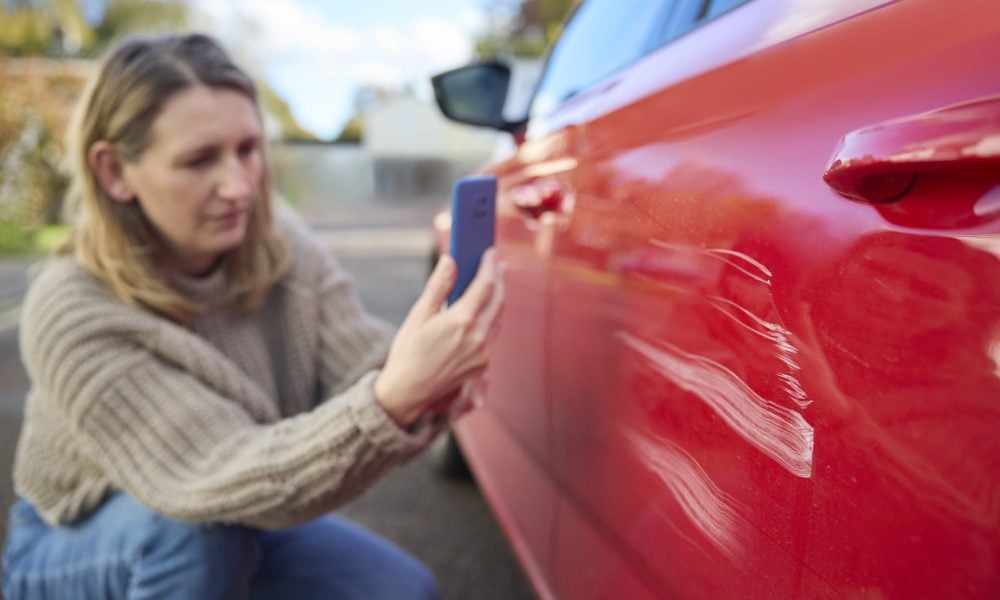
Explaining 5 Types of Car Scratches and How to Fix Them

Every car owner knows the sinking feeling that comes with discovering a new scratch on their beloved vehicle. Whether it’s a badge of honor from navigating tight city parking or an unwelcome reminder of a careless moment, scratches are an inevitable part of car ownership. But not all car scratches spell doom for your car’s aesthetic.
The key to keeping your vehicle looking its best is understanding the type of car scratch you’re dealing with and knowing the right way to fix it. From superficial marks that barely skim the surface to deeper gouges that expose the underbelly of your car’s paint job, each type of scratch has its own set of challenges and solutions.
We’ll dive into 5 common types of car scratches, how to identify them, what causes them, and, most importantly, how to fix them. Armed with this knowledge, you can take swift, effective action to erase those blemishes and keep your car looking pristine.
Whether you’re a DIY enthusiast ready to tackle repairs yourself or you’re weighing the option of professional services, understanding these car scratches is your first step towards maintaining your car’s value and appearance.
1. Clear Coat Scratch
Imagine your car’s surface as a layered cake. The top frosting layer, much like the clear coat on your vehicle, is there to protect everything underneath while making it look shiny and appealing. When this top layer gets scratched, it might seem bad, but it’s often the easiest fix in the world of car blemishes. Clear coat scratches are like superficial scratches on the skin—they don’t go deep, but they do need attention to avoid future issues.
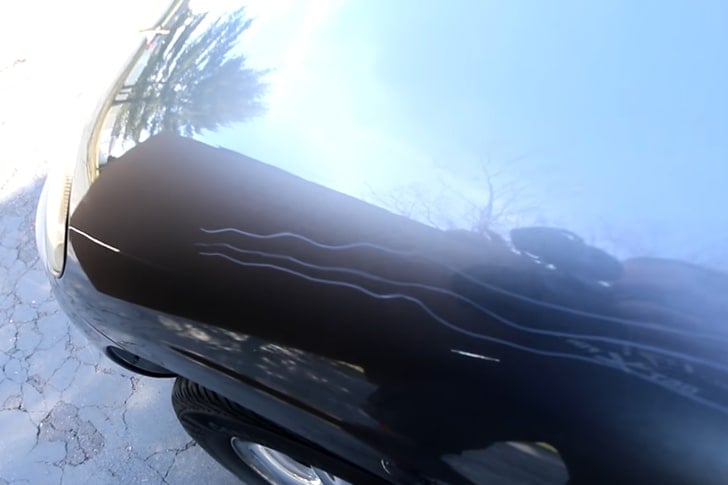
ChrisFix / Youtube
Identifying a Clear Coat Scratch
Spotting a clear coat scratch is pretty straightforward. Run your fingernail gently over the scratch; if it glides over without catching, you’re likely dealing with a clear coat scratch. These are the good news kind of scratches, if there ever was one. They usually come from everyday encounters with small road debris, a stray shopping cart, or even an overenthusiastic bird. While these car scratches might catch your eye, they don’t spell disaster.
Fixing the Issue
Fixing a clear coat scratch is a DIY dream. With a basic car scratch repair kit, which you can pick up for the cost of a few cups of coffee, you can tackle these marks over a weekend afternoon. The process usually involves applying a compound that fills in the scratch, and then buffing the area with rubbing compound until it blends seamlessly with the surrounding surface. It’s a simple task that doesn’t require a professional’s touch and leaves your car looking as good as new.
Cost to Fix a Clear Coat Scratch
The cost of repair is minimal, ranging from a car scratch repair kit at home for less than a family movie night out to a bit more if you decide to let a professional handle it. However, considering the straightforward repair process, it’s an inviting task for anyone looking to keep their car in top shape without breaking the bank.
2. Base Coat Car Scratch
Diving a bit deeper into the anatomy of car scratches brings us to the base coat, or paint, scratch. This is where things get a bit more serious, but not to the point of despair. Think of this as a scratch that has gone through the clear coat frosting and nicked the cake underneath. The paint layer is what gives your car its color and personality, so a car scratch here is more noticeable and requires a bit more effort to fix.
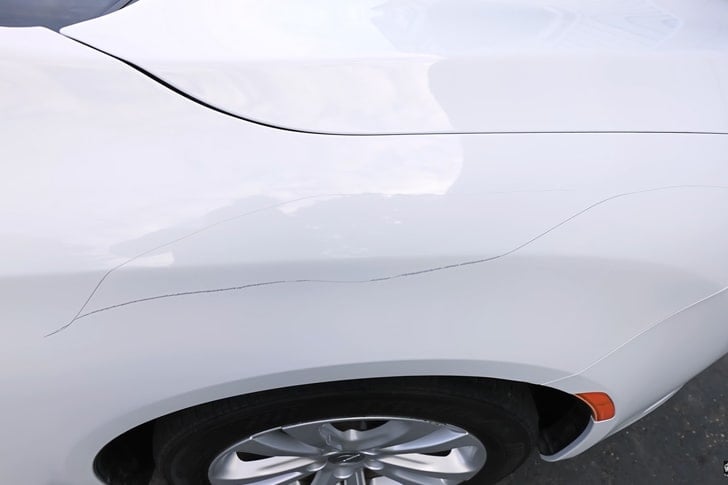
ChrisFix / Youtube
Identifying a Base Coat Car Scratch
Figuring out if you’re dealing with a base coat scratch involves the same fingernail test used for clear coat scratches but with a twist. If your nail catches in the car scratch, it’s a sign that it’s reached the paint layer. These scratches are more than just surface marks; they’ve made it through the protective clear coat and started to dig into your car’s color. Despite the breach, if you can still see the color of your car in the scratch, you’re not yet looking at metal, which is a small relief.
How It Happens
The culprits behind base coat scratches are often the same as those for clear coat ones, but they hit harder or find unprotected spots. Sometimes, what starts as a clear coat scratch can become a base coat car scratch if not addressed, especially if the area sees repeated abuse. It’s like a small problem growing bigger because it wasn’t nipped in the bud, emphasizing the importance of regular care and maintenance.
Fixing the Issue
Addressing a base coat car scratch steps up the repair game. While a clear coat scratch might be a simple DIY fix, a base coat scratch might call for a bit more finesse. A high-quality car scratch repair kit can still be a go-to solution, especially those designed for paint repairs. These kits usually include a touch-up paint pen matched to your car’s color, allowing you to fill in the scratch with precision.
The key here is patience and attention to detail. Applying the touch-up paint in layers, letting each layer dry thoroughly before adding the next, can yield impressive results. It’s about building the paint back up to the level of the surrounding area, and then blending it to make the scratch disappear into the car’s overall color.
Cost to Fix a Base Coat Scratch
The DIY route for fixing a base coat scratch is still an affordable option, with costs slightly higher than those for clear coat scratches due to the need for color-matched paint. Professional repairs, on the other hand, will cost more, reflecting the labor and materials needed to achieve a flawless match and blend. It’s a balance between the cost and the desired outcome, with DIY efforts often saving money but requiring a steady hand and a bit of time.
3. Primer Scratch
When a car scratch reaches the primer layer, it’s like hitting the structural framework of your car’s aesthetic. This level of car scratch has gone beyond the superficial and color layers, reaching the primer that sits just above the metal. It’s a clear signal that your car’s exterior needs more than a simple touch-up; it requires a careful and considerate approach to prevent long-term damage, such as rust, that could compromise the vehicle’s integrity.
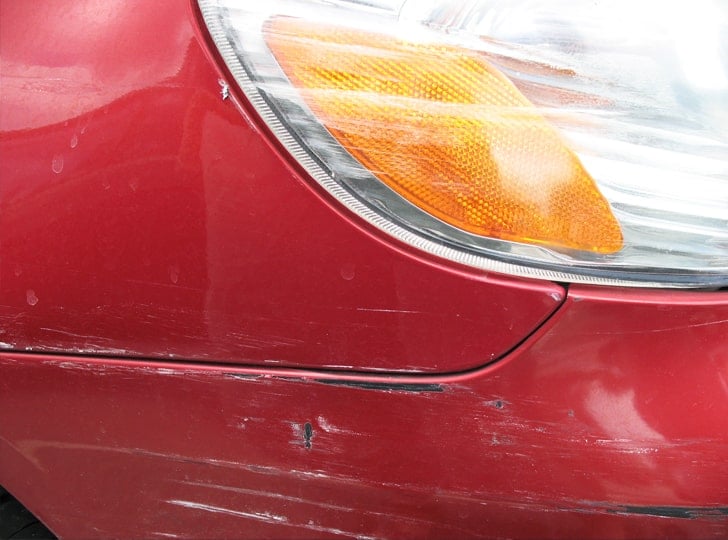
Donielle / Flickr
Identifying a Primer Scratch
Spotting a primer scratch is relatively straightforward—these are the wounds that reveal a distinctly different color beneath the paint, often gray or black, which stands in stark contrast to your car’s color. The absence of color and the appearance of this base layer are clear indicators that the car scratch has made its way through both the clear coat and paint layers. When you see metal, you’re looking at a breach that has gone as deep as it can go without starting to eat into the car itself.
How It Happens
Primer scratches often result from more significant impacts or neglect. A minor scrape that’s ignored can worsen over time, especially in harsh weather conditions or if the car is regularly exposed to corrosive materials like salt. Accidents, of course, are a more direct cause, with the force of the impact stripping away both the protective and aesthetic layers of the car’s exterior.
Fixing the Issue
Addressing a primer scratch involves a more comprehensive repair process. This might mean applying a new layer of primer to protect the exposed area, followed by matching touch-up paint, and finally, sealing everything with a clear coat. This multi-step process ensures that each layer of your car’s exterior is restored, providing both protection and visual appeal.
For those feeling less confident in their auto repair skills, or when dealing with a particularly large or deep car scratch, seeking professional help is a wise choice. Auto body shops have the tools, paints, and expertise to restore your car’s surface to its original condition, ensuring that the repair blends seamlessly with the rest of the car’s exterior.
Cost to Fix a Primer Scratch
The cost to repair a primer scratch reflects the complexity of the job. A car scratch repair kit that includes primer, paint, and clear coat is available, but the expense rises with the need for precision-matched paint and potentially specialized tools. Professional repairs, given their thoroughness and guarantee of quality, will understandably command a higher price, often justified by the value they add in terms of longevity and appearance.
4. Wheel Scratch (Curb Rash)
Navigating tight parking spots or hugging the curb a little too closely can result in the dreaded wheel scratch, commonly known as curb rash. This type of damage, exclusive to the wheels of your car, doesn’t just affect the vehicle’s aesthetics; it can also hint at potential damage to the wheel’s integrity over time. But fear not, as even the most battle-scarred wheels can be made to look new again with the right approach.
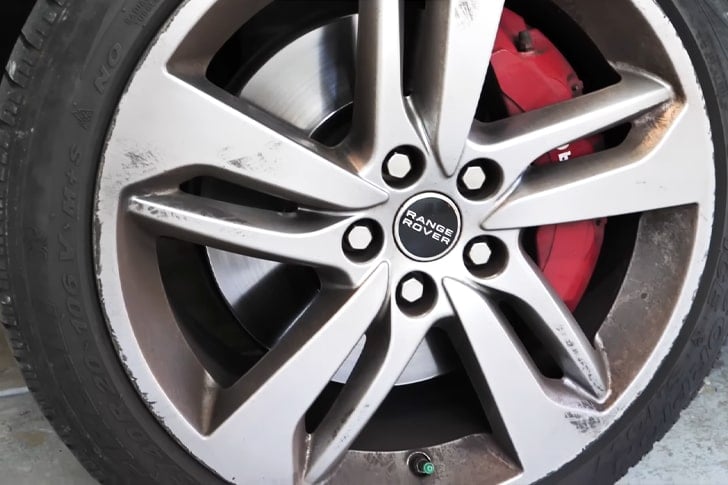
Stauffer Garage / Youtube
Identifying a Wheel Scratch
Curb rash manifests as scrapes or gouges on the outer edge of a wheel, where the rim meets the tire. This damage is most often cosmetic but, if severe, can lead to further degradation of the wheel material, especially if the protective paint or coating is compromised, exposing the bare metal underneath. Recognizing curb rash is straightforward—look for abrasions or marks along the wheel’s rim, which are typically easy to spot.
How It Happens
The most common scenario for incurring wheel scratches is misjudging distance while parking, leading to the wheel scraping against a curb. However, daily driving hazards, such as potholes or debris on the road, can also contribute to wheel damage. Essentially, any forceful contact with a hard surface can result in curb rash, making it a common issue for drivers in both urban and rural settings.
Fixing the Issue
Repairing curb rash involves a few steps to ensure not only the wheel’s appearance is restored but also its protective layer. Sanding down the damaged area to smooth out scratches and gouges is the first step. Following this, applying a primer and then paint restores the wheel’s color and finish. For wheels with a special finish, such as a clear coat or powder coating, additional steps may be required to match the original appearance.
For those who prefer a hands-off approach, professional repair services specialize in restoring wheels to their original condition. These experts have access to a wide range of paints and finishes, ensuring a match to your vehicle’s specific wheel style.
Cost to Fix a Wheel Scratch
The cost to remedy curb rash can vary widely based on the extent of the damage and the repair route chosen. DIY enthusiasts can find a car scratch repair kit for a relatively low cost, though time and effort will be significant investments. On the other hand, professional repairs offer convenience and a high-quality finish but at a higher price point. The severity of the damage will often dictate the most cost-effective approach, with minor scratches being suitable for DIY repairs and more severe damage benefiting from professional attention.
5. Glass Scratch
Glass scratches, particularly on windshields and windows, can be more than just an annoyance; they can impair visibility and detract from your vehicle’s overall look. Unlike scratches on the body of the car, those on glass surfaces require a unique approach for effective removal. Fortunately, with a bit of know-how, many glass scratches can be addressed, restoring clear vision and maintaining your car’s pristine appearance.
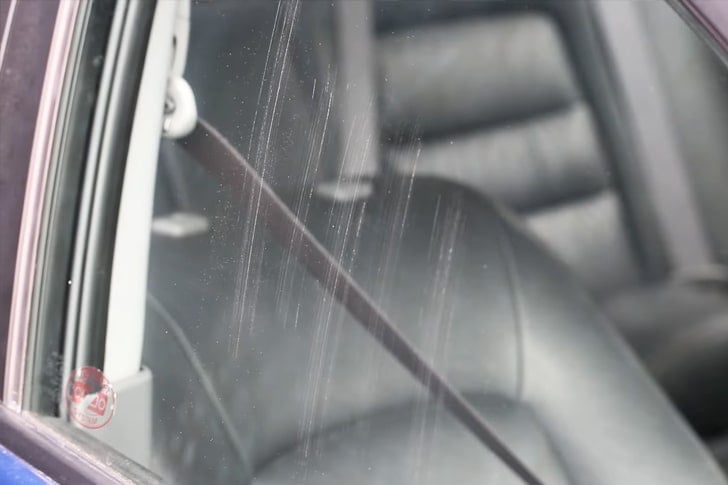
GlassPolishShop / Youtube
Identifying Glass Scratches
Glass scratches range from superficial marks barely visible to the eye, to deeper grooves that can be felt with a fingernail. These scratches often result from everyday encounters with abrasive materials like sand, small stones, or even the misuse of windshield wipers. The first step in tackling glass scratches is assessing their depth, as this will dictate the most appropriate method of repair.
How It Happens
Aside from the natural wear and tear of windshield wipers, one of the primary culprits behind glass scratches is debris encountered during driving. High speeds can cause small particles to impact the glass with enough force to leave a mark. Additionally, cleaning the windshield without proper care—using dry, rough materials, for example—can also contribute to scratching.
Fixing the Issue
For minor scratches, a DIY approach can be quite effective. Specialized glass polishing compounds are available that can buff out shallow marks, making them virtually invisible. These compounds are applied with a soft cloth and worked into the car scratch in a circular motion, gradually fading the mark. For those preferring household solutions, non-gel toothpaste has been known to offer a similar effect for very light car scratches.
When it comes to deeper car scratches, professional intervention might be necessary. Auto glass repair specialists have the tools and expertise to either polish deep scratches effectively or recommend replacement if the damage compromises the glass’s integrity.
Cost to Fix a Glass Scratch
The cost of repairing glass scratches can vary widely based on the scratch’s severity and the chosen repair method. DIY solutions are the most cost-effective, with polishing compounds and car scratch repair kit available at a low cost. However, for deeper scratches requiring professional repair, the cost will increase, reflecting the specialized equipment and skill needed for the job. In cases where replacement is advised, the expense will be significantly higher, though this is often partially covered by insurance, depending on your policy.
Preventing Car Scratches
Keeping your car free from scratches is more about prevention than it is about repair. While it’s nearly impossible to shield your vehicle from every potential hazard, adopting some smart habits and practices can significantly reduce the risk of scratches. Here’s how you can protect your car’s exterior and keep it looking sharp for the long haul.
Mindful Cleaning Practices
The way you wash your car plays a crucial role in preventing scratches. Opting for high-quality, soft wash mitts and microfiber cloth can make a world of difference. These materials are designed to gently lift and remove dirt without dragging it across the surface of your car, which is often how fine scratches appear. Also, choosing the right car cleaning products is essential. Automotive-specific soaps have formulations that lift dirt away from the surface, allowing for a safer cleaning process.
Smart Parking Choices
Where you choose to park can also impact your car’s likelihood of getting scratched. Whenever possible, try to park in less crowded areas to minimize the risk of someone brushing against your car or opening their door onto yours. Avoid parking under trees where birds and falling branches can cause damage, and be wary of areas with loose gravel or debris that can be kicked up by passing vehicles.
Use of Protective Layers
Investing in protective measures such as car wax or a ceramic coating can add an extra layer of defense against scratches. These products create a barrier on top of your car’s paint, making it more difficult for debris and small particles to cause damage. Additionally, consider using clear protective films on high-impact areas like bumpers, door edges, and mirrors, as these are common sites for scratches to occur.
Regular Maintenance
Keeping up with your car’s maintenance is another effective way to prevent scratches. This includes prompt repair of any existing damage before it gets worse. For instance, a small chip in your windshield can quickly turn into a large crack if left unaddressed. Similarly, addressing any paint damage promptly can prevent rust and further degradation of your car’s exterior.
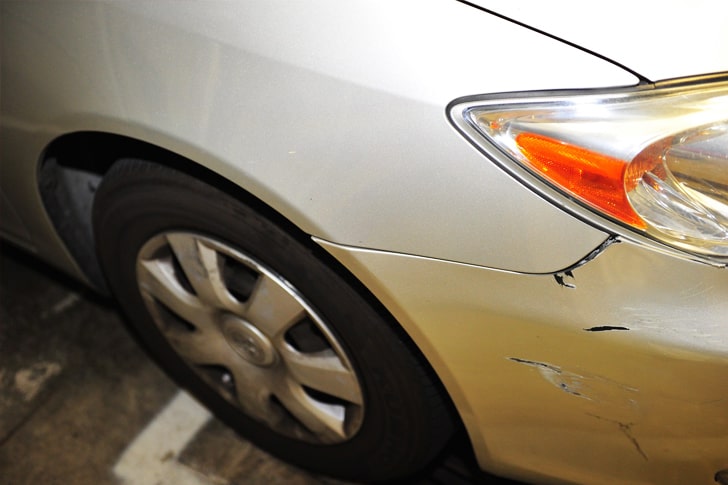
sureshnarsimhan / Flickr
Common Questions About Car Scratches
Q. Scuff vs. Scratch: What’s the Difference?
When it comes to car damage, terms like ‘scuff’ and ‘scratch’ are often used interchangeably, but there’s a subtle difference. A scuff is generally superficial, affecting only the very top layer of the paint or clear coat. These marks can often be buffed out without much effort. A car scratch, however, indicates that the damage has penetrated deeper into the paint layers or beyond, requiring more comprehensive repair methods. Understanding this distinction can help you determine the best course of action for repair.
Q. Does Car Insurance Cover Scratches?
The coverage for scratches depends on your insurance policy. Comprehensive insurance typically covers scratches if they result from vandalism, an accident, or other covered incidents. However, if the scratches are due to wear and tear or neglect, you might find yourself out of luck. It’s always best to review your policy or speak with your insurance agent to understand what’s covered. Also, consider the cost of your deductible versus the repair cost; sometimes, it’s more economical to handle minor repairs out of pocket.
Q. How Much Does Scratch Removal Cost?
The cost of removing a scratch varies widely based on the scratch’s depth, size, and location, as well as whether you choose a DIY approach or professional repair. For minor clear coat scratches, a DIY kit might run you as little as $15 to $30. Deeper paint and primer scratches repaired at home could cost between $20 to $70, depending on the materials needed. Professional repairs, on the other hand, can range from around $100 for minor scratches to $500 or more for extensive damage. Before deciding on a repair method, weigh the cost against the scratch’s severity and your comfort level with DIY repairs.
More inDriving
-
`
U.S. Reduces Tariffs on Japanese Cars to 15% Under Trump’s Deal
In a move reshaping U.S.-Japan trade relations, former President Donald Trump confirmed a new agreement that slashes tariffs on Japanese car...
August 9, 2025 -
`
Adults in Ohio Face Stricter Rules to Obtain Driver’s License
Ohio has passed a new law that will change the way adults under 21 get their driver’s licenses. Signed into law...
July 31, 2025 -
`
Gen Z Craves Career Guidance, But Their Parents Are Struggling Too
Gen Z is stepping into the future with curiosity and ambition—but they’re not doing it alone. A growing number of teens...
July 25, 2025 -
`
Do Car Insurance Companies Offer Pay-As-You-Go Plans?
Car insurance premiums often feel unfair to people who rarely drive. Yet, most traditional auto policies still charge a fixed monthly...
July 17, 2025 -
`
Why the Koenigsegg Sadair Spear Is the Ultimate Hypercar Beast
Koenigsegg has revealed a new beast—the Sadair’s Spear. Tuning its focus on raw performance and brutal speed, this hypercar marks the...
July 11, 2025 -
`
Which States Have the Safest—and Riskiest—Drivers in America?
Driving safety isn’t just about skill. It’s also about location. A recent nationwide report shines a spotlight on where drivers are...
July 4, 2025 -
`
How to Save on Tesla Car Insurance Without Compromising Coverage
Owning a Tesla often brings savings on fuel and a futuristic driving experience, but the conversation changes quickly when it comes...
June 26, 2025 -
`
10 Weird Cars That Turned Heads and Won Hearts
Some cars turn heads with speed, others with luxury—but a rare few grab your attention simply by being delightfully strange. From...
June 20, 2025 -
`
Next-Gen Jeep Cherokee Expected to Arrive by Late 2025
After a break of two years, Jeep is prepared to relaunch the Cherokee brand. The automaker confirmed the return with fresh...
June 12, 2025


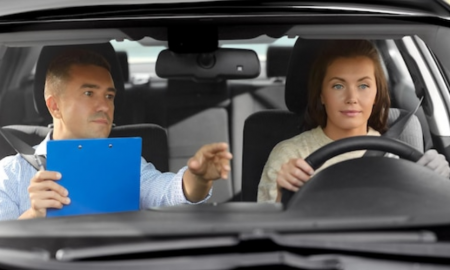

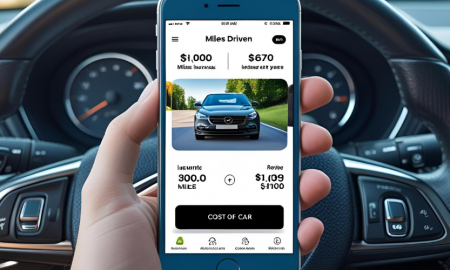
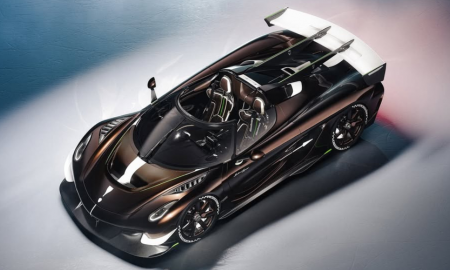
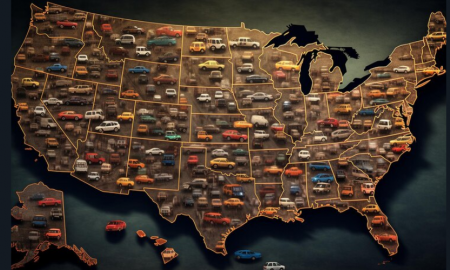

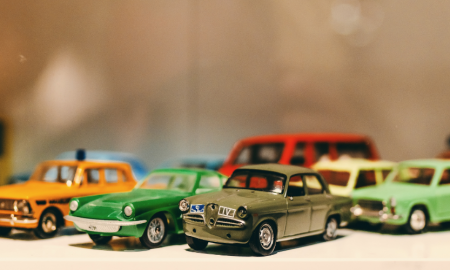
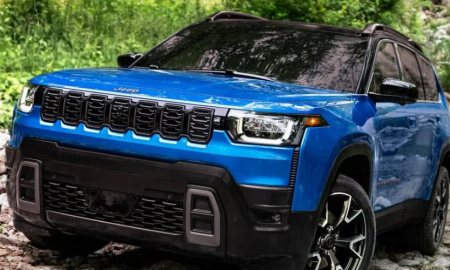
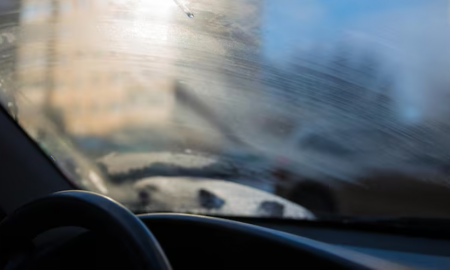




You must be logged in to post a comment Login